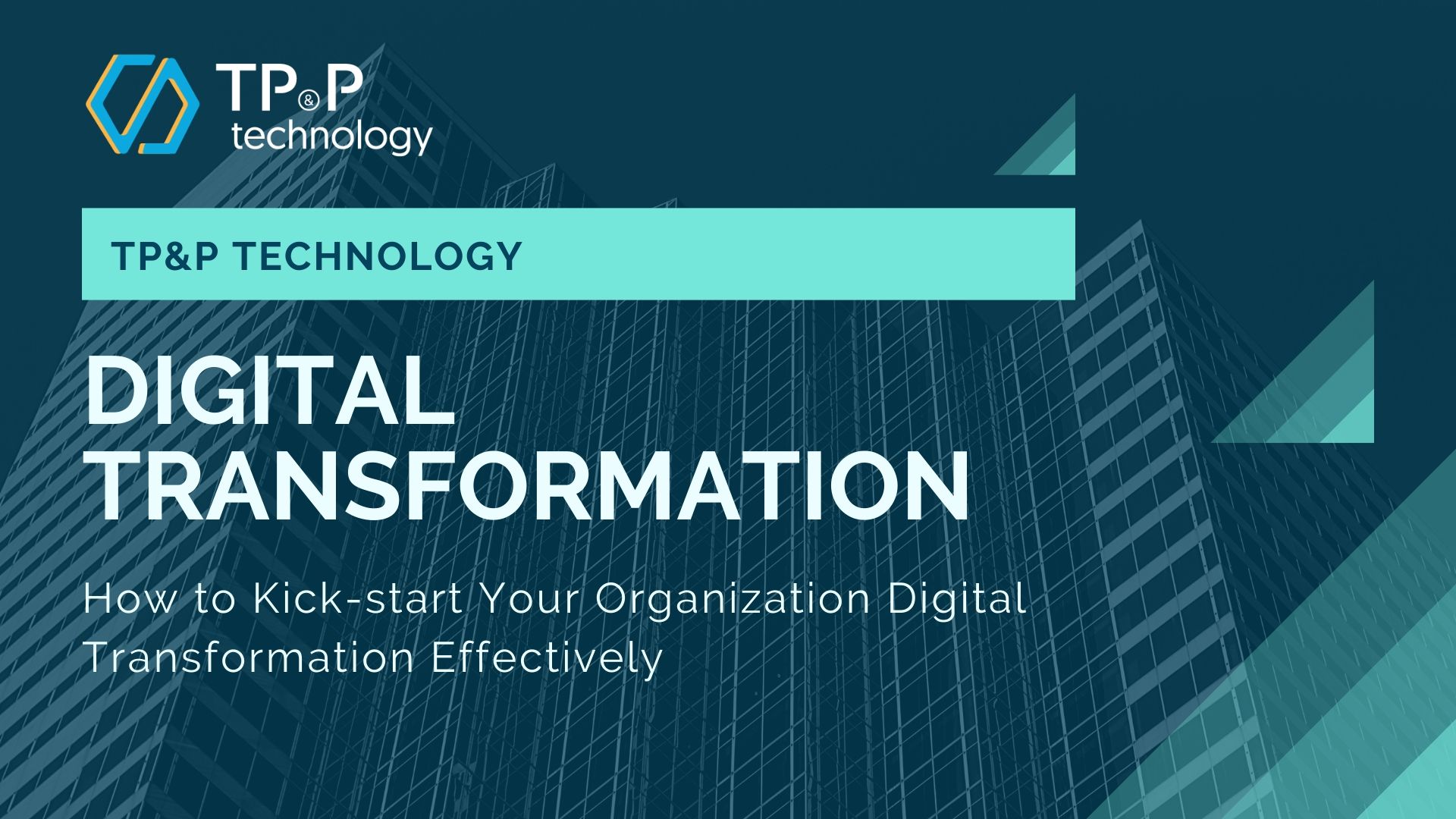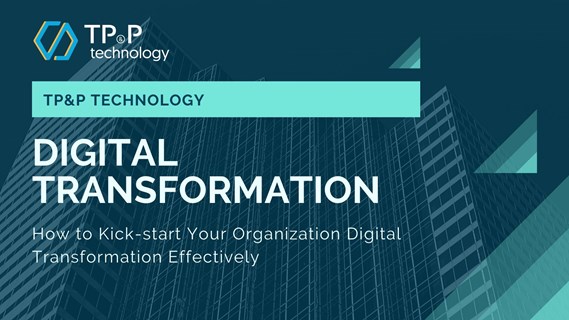
How to Kick-start your organization digital transformation
The term digital transformation is perhaps one of the biggest buzzwords in the IT industry lately. Still, many business organizations still haven’t been able to jump-start their digital information or encounter difficulties while doing so. Digital transformation requires companies to introduce drastic changes into their current IT infrastructure system, which involves people, on-going business processes, and machinery - ultimately making it challenging for organizations to make real progress on digital transformation.

Innovative technologies have disrupted and transformed businesses in so many industries beyond IT and Technology. Artificial Intelligence (AI) and Machine Learning (ML), Big Data, RPA (robotic process automation), IoT, Blockchain, etc. are among the advanced emerging technologies revolutionizing businesses. Being able to leverage those technologies will equip your organization the competitive advantage to compete in the new digital economy. Especially in QUICKLY predicting and responding to customers’ demand and change - at new levels of enterprise scalability, and flexibility - in an innovative way.
Below are some recommendations to help business organizations kick-start their digital transformation and achieve real progress:
* Understand the reasons why digital transformation is important:
Many business organizations have successfully leveraged technologies to automate and optimize their business processes. The new digital economy is already here. Thus, business organizations need to develop their own digital transformation initiatives through an extensive understanding of how technologies can be applied to solve their key business problems, otherwise, they’ll be left behind.
With great advancement in technology, the significant reduction in the cost of entry using new technologies, especially now SaaS platforms offer business organizations a comprehensive service, with a customizable template that enables companies to easily kicking off digital transformation saving time and money. Innovative technologies enable organizations to focus on the positive aspects and reduce the negative aspects of disruption through quick experimentations.
* Start by looking in-house
Some emerging technologies are still in infancy, but many are already in its maturing stage. And, nowadays, it’s more challenging to plan and implement digital transformation, including new and disruptive technology solutions top-down, for everyone across the company. A more efficient approach is to identify an in-house team or individuals that are capable of making progress and then make the success led as an example, increasingly introduces changes into behaviors and working cultures.
* Align IT and Business People - Focus on Collaborations:
Digital Transformation is more than a typical IT development project. To do it right, organizations will need to have the right assessment and understanding of current problems, business processes, models - in order to propose and deploy technology changes that will be most effective in solving problems. The overall transformation requires participation from both business users who are going to directly use the new solutions on solving their problems, as well as developers working on the technology side.
Find out more about TP&P Technology’s DevOps Consulting Services
* Becoming good at quick development and iteration:
Among the critical key success criteria of digital transformation is its time-to-market release. As soon as your new technology solution go-live, internal business users, as well as external customers, can get their hands on the new software experience, and organizations can start evaluating the value it delivers. As a result, in order to get digital transformation moving, organizations need to experiment with quick development to innovate and release code often - in order to gain feedback and improve code quality in the subsequent iterations.
*Bringing the technical skills gap: once the project start rolling, you’ll likely release that there are some technical skill gaps present within your organization. Especially, when there’s a shortage of IT professionals in emerging technologies such as RPA, Machine Learning, and Data Science, Advanced Analytics etc. Other key areas such as business systems integration, software architecture, and solution design are also much needed but difficult to acquire. This problem can be solved through outsourcing and hiring external technology partners to help you quickly fill in the gap.
* Integration and Interoperability:
Digital transformation needs data (a lot of data) to allow business organizations to make informed decisions, as well as creating and offering innovative experiences to customers. Yet, in many circumstances, the required data is locked away in silos and stored behind legacy applications. For instance, many businesses operate on a subscription services model would definitely find out the underlying reasons behind churning and try to lower it as much as possible.
This initiative would need instant access to data from a different number of systems including sales data, marketing, order payment, customer data, and others. For many businesses, that’s currently not possible. Therefore, if your business still operates in silos, then it’s time to modernizing - not all at once but rather block-by-block. Here, organizations can start with the business function relevant to the initiative, and make data available through APIs integration.
In the longer term, Business organizations should make strategic decisions about data management for easier accessibility, ensuring accuracy based on one single source of data only.
Conclusion
To conclude, when it comes to digital transformation, the priority is that your organization should be able to start quickly, from idea to proof of concept (POC) to production, and then scaling really fast. It’s important to start small, preferably with a light-house project, and gradually introduce changes across the business.
Additionally, it’s important for your business to have a partner that can support you with the execution at every step. In particular, select ones that are experienced, with proven track records of successful implementation and scaling this type of digital transformation projects.



